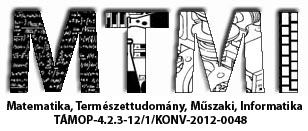The effect of LPS on the level of different platelet activation markers
Abstract data
Sepsis still remains a serious medical condition with a high risk of death despite advances in critical care medicine. During Gram-negative sepsis, leukocytes and platelets become activated via toll-like receptor-4 by lipopolysaccharide (LPS), the main outer surface component of Gram-negative bacteria. Due to an exaggerated inflammatory response, it may result in endothelial injury and thrombotic complications with severe thrombocytopenia. However, it has not been clarified how LPS alters platelet activation. Certain clinically relevant Gram-negative bacteria produce variable amount of (rough) R-form of LPS (Re-LPS).
In this study, we measured the levels of different platelet activation markers in human platelet-rich plasma after in vitro stimulation of platelets by Re-LPS (Re595) from Salmonella minnesota. Platelet function was investigated by studying aggregation with optical aggregometry, and via the analysis of exposure of P-selectin (CD62) and CD40L as well as platelet-derived microparticle (PMP) formation by flow cytometry using 10 μg/ml Re-LPS. Dual platelet activation by low and high concentrations of thrombin-receptor activating peptide (TRAP; 5 μM and 20 μM) with Re-LPS was also performed.
We found that Re-LPS was unable to induce platelet aggregation, but potentiated TRAP-elicited (5 μM) aggregation. Re-LPS alone did not induce P-selectin upregulation, but resulted in augmented CD62 positivity upon coactivation with low TRAP concentration. However, significantly increased platelet CD40L expression was measured by Re-LPS, which was more prominent in mean fluorescence intensity (172.5 vs. 20.9) than in percent positivity (2.7% vs. 1.3%) compared to the control sample. In addition, Re-LPS enhanced mean PMP level (698 PMPs/μl plasma), and also synergistically primed PMP formation induced by TRAP (1223 PMPs/μl plasma) versus the only TRAP-stimulated (915 PMPs/μl plasma), and the non-activated samples (430 PMPs/μl plasma).
In conclusion, Re-LPS directly modulates platelet activation, and these cellular events may play a role in triggering thrombotic complications in septic conditions.
Támogatók: Támogatók: Az NTP-TDK-14-0007 számú, A Debreceni Egyetem ÁOK TDK tevékenység népszerűsítése helyi konferencia keretében, az NTP-TDK-14-0006 számú, A Debreceni Egyetem Népegészségügyi Karán folyó Tudományos Diákköri kutatások támogatása, NTP-HHTDK-15-0011-es A Debreceni Egyetem ÁOK TDK tevékenység népszerűsítése 2016. évi helyi konferencia keretében, valamint a NTP-HHTDK-15-0057-es számú, A Debreceni Egyetem Népegészségügyi Karán folyó Tudományos Diákköri kutatások támogatása című pályázatokhoz kapcsolódóan az Emberi Erőforrás Támogatáskezelő, az Emberi Erőforrások Minisztériuma, az Oktatáskutató és Fejlesztő Intézet és a Nemzeti Tehetség Program



